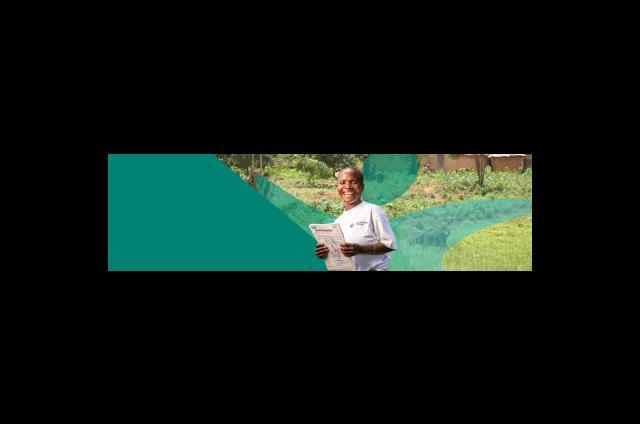Delivering The Global Goals 2022
Goal 1: No Poverty
End poverty in all its forms everywhere.
22% of women report earning at least $1.90 a day
Target 1.1: eradicate extreme poverty (people living on less than $1.90 a day).
This programme data for Afghanistan reflects a two year period as our programmes were paused in August 2021 and resumed in February 2022 as a result of the Taliban takeover. At graduation from our programme 22% of women in Afghanistan reported personal earnings of at least $1.90 a day, compared to 4% at enrolment.
Goal 1: No Poverty
End poverty in all its forms everywhere.
34% of women participants report saving a portion of their earnings
Target 1.5: By 2030, build the resilience of the poor and those in vulnerable situations and reduce their exposure and vulnerability to climate-related extreme events and other economic, social and environmental shocks and disasters.
The share of women reporting saving a portion of their earnings increased from 1% to 34% from enrolment to graduation.
“I learned tailoring tracks and I bought a tailoring machine with my stipend and $50 in cash assistance that I received from Women for Women International, I started clothing rental services to support my family as well as participating in savings groups and I decided to start a small business in the near future. That is why now I feel very strong and enthusiastic.’’
Stronger Women, Stronger Nations programme participant, Afghanistan
Goal 2: Zero Hunger
End hunger, achieve food security and improved nutrition and promote sustainable agriculture
Food insecurity is worsening in Afghanistan
Target 2.1: By 2030, end hunger and ensure access by all people, in particular the poor and people in vulnerable situations, including infants, to safe, nutritious and sufficient food all year round.
Upon graduating from our year-long programme, 45% of women reported having sufficient food in the house in the last four weeks compared to 66% at enrolment.
The reduction here between enrolment and graduation reflects the worsening women’s rights, economic and humanitarian crisis in Afghanistan that has been impacting all aspects of women’s lives, including food security, since the Taliban takeover in August 2021.
Goal 3: Good Health and Wellbeing
Ensure healthy lives and promote well-being for all, at all ages.
60% of women participants report practising family planning
Target 3.7: By 2030, ensure access to sexual and reproductive health-care services, including family planning, information and education.
60% of women on our programme in Afghanistan reported sometimes or frequently practising family planning at graduation compared to 53% at enrolment.
Goal 4: Quality Education
Ensure inclusive and equitable quality education and promote lifelong learning opportunities for all.
Significant reduction to girls attending school
TARGET 4.1: By 2030, ensure that all girls and boys complete free, equitable and quality primary and secondary education leading to relevant and effective learning outcomes.
At enrolment on our programme in 2021 63% of school-aged girls related to women enrolled on our programme in Afghanistan were attending school.
By graduation, nearly two years later and after the de facto government took control of Kabul, this figure has dropped to 35%. This is a reflection of how the de facto government’s decision to ban girls from attending secondary school has significantly limited girls’ access to education.
*This year we have changed our approach to collecting data on girls' education to provide us with a more accurate average. Therefore, this year's data on girls' education should not be directly compared with previous years.
Goal 5: Gender Equality
Achieve gender equality and empower all women and girls.
92% INCREASE IN PERCEIVED SELF-EFFICACY OF WOMEN PARTICIPANTS
TARGET 5.1: By 2030, end all forms of discrimination against all women and girls everywhere.
In 2021, before the de facto government took control of Afghanistan, women rated themselves on average 0.48 on a scale of 0-1 for their self-efficacy (their self confidence, their ability to reach their goals). This increased in 2022 to 0.73 – a 92% change.
This change is positive and important to reflect on, as even amidst an ongoing women’s rights, economic and humanitarian crisis, women’s perception of themselves and their abilities increased following their participation in our Stronger Women, Stronger Nations programme.
Goal 5: Gender Equality
Achieve gender equality and empower all women and girls
54% of women report being involved in decisions about having more children
TARGET 5.6: By 2030, Ensure universal access to sexual and reproductive health and rights as agreed in accordance with the Programme of Action of the International Conference on Population and Development and the Beijing Platform for Action
The percentage of women involved in decisions about having more children increased from 47% to 54% in Afghanistan 2022. This relative increase shows how even when women’s rights were being rolled back, women continued to assert the importance of their involvement in family planning.
Goal 8: Decent Work and Economic Growth
Promote inclusive and sustainable economic growth, employment and decent work for all
28% of women report employment
TARGET 8.3: Promote development-oriented policies that support productive activities, decent job creation, entrepreneurship, creativity and innovation, and encourage the formalisation and growth of micro, small and medium-sized enterprises
On graduation from our programme, 28% of women reported employment across all occupation levels compared to 5% at enrolment.
Since the de facto government took power, professional opportunities for women have been severely restricted. Many women lost their jobs. Others are only allowed to continue if they work from home. The 454% increase of women working emphasises the importance of investing in programmes like ours that open economic opportunities for women in some of the most difficult contexts.
Goal 16: Promote just, peaceful and inclusive societies
Promote peaceful and inclusive societies for sustainable development, provide access to justice or all and build effective, accountable and inclusive institutions at all levels.
25% of women have spoken publicly against abuse of women
16.1 By 2030, significantly reduce all forms of violence and related death rates everywhere.
25% of women graduates of our programme in Afghanistan reported publicly speaking out against the abuse of women compared to 10% at enrolment. In 2021 this figure was 100% at graduation. The relative decline emphasises the impact that the Taliban takeover has had on women’s ability to speak out.
This data differentiation shows that the de facto government in Afghanistan are not a homogenous group. It also shows just how importance it is to have context specific approaches to programming, even within the same country.
These figures are averages across the different contexts in which we operate in Afghanistan. There are significant differences between our programme data in Kabul and the Nangahar province. In 2021 at enrolment 8% of women in the Kama group In Nangahar spoke out against abuse of women. By 2022 this figure increased significantly to 74%, this is much higher than in any previous year’s data for Afghanistan. This could reflect how women in the Kama group may have felt more empowered to say something as a response to the rollback women’s rights in Afghanistan have faced.
Goal 16: Peace, Justice and Strong Institutions
Promote peaceful and inclusive societies for sustainable development, provide access to justice or all and build effective, accountable and inclusive institutions at all levels.
16% of women discussed community issues with other women in community
16.7 Ensure responsive, inclusive, participatory and representative decision-making at all levels.
The percentage of women who discussed issues with other women in their community increased by 100% from 8% at enrolment to16% at graduation.


